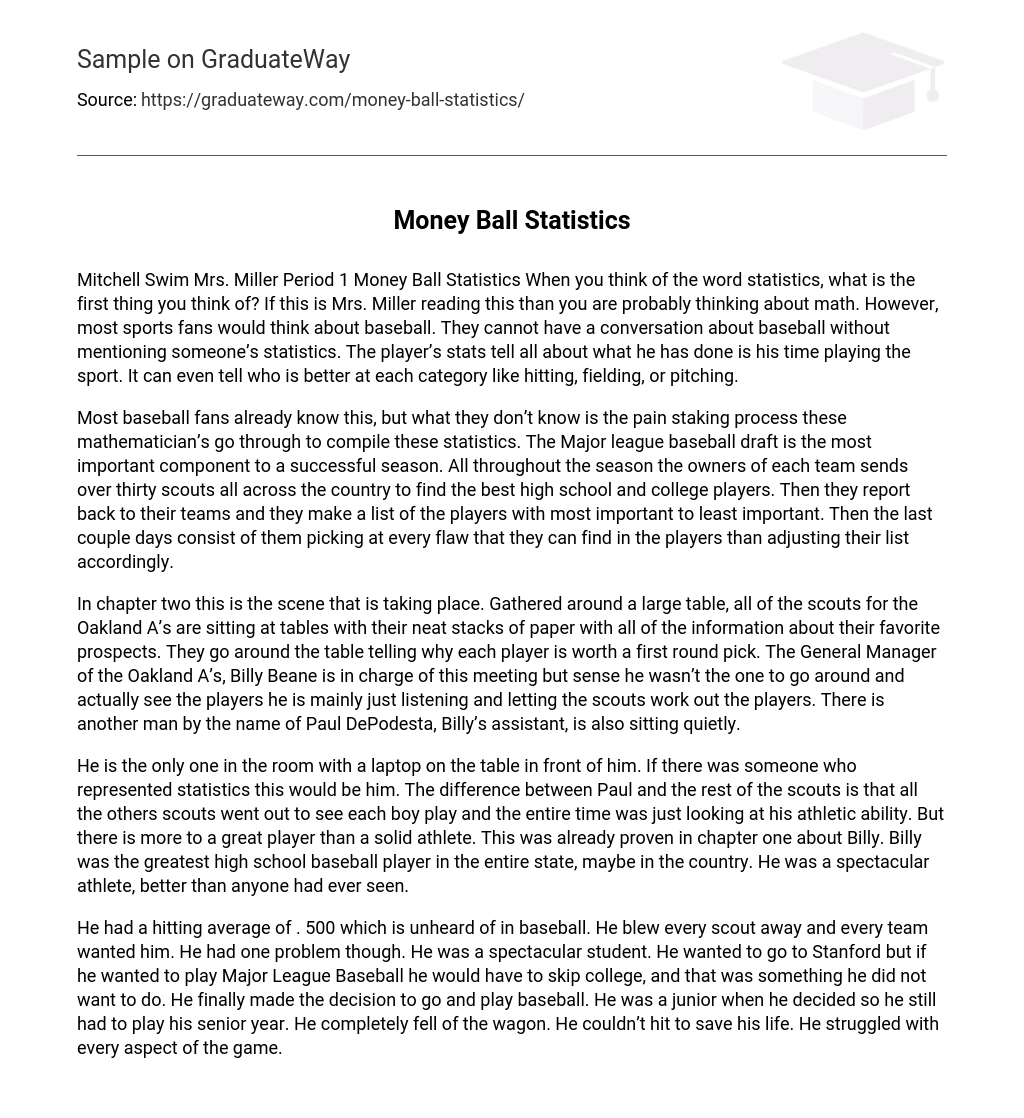When you think of the word statistics, what is the first thing you think of? If this is Mrs. Miller reading this than you are probably thinking about math. However, most sports fans would think about baseball. They cannot have a conversation about baseball without mentioning someone’s statistics. The player’s stats tell all about what he has done is his time playing the sport. It can even tell who is better at each category like hitting, fielding, or pitching.
Most baseball fans already know this, but what they don’t know is the pain staking process these mathematician’s go through to compile these statistics. The Major league baseball draft is the most important component to a successful season. All throughout the season the owners of each team sends over thirty scouts all across the country to find the best high school and college players. Then they report back to their teams and they make a list of the players with most important to least important. Then the last couple days consist of them picking at every flaw that they can find in the players than adjusting their list accordingly.
In chapter two this is the scene that is taking place. Gathered around a large table, all of the scouts for the Oakland A’s are sitting at tables with their neat stacks of paper with all of the information about their favorite prospects. They go around the table telling why each player is worth a first round pick. The General Manager of the Oakland A’s, Billy Beane is in charge of this meeting but sense he wasn’t the one to go around and actually see the players he is mainly just listening and letting the scouts work out the players. There is another man by the name of Paul DePodesta, Billy’s assistant, is also sitting quietly.
He is the only one in the room with a laptop on the table in front of him. If there was someone who represented statistics this would be him. The difference between Paul and the rest of the scouts is that all the others scouts went out to see each boy play and the entire time was just looking at his athletic ability. But there is more to a great player than a solid athlete. This was already proven in chapter one about Billy. Billy was the greatest high school baseball player in the entire state, maybe in the country. He was a spectacular athlete, better than anyone had ever seen.
He had a hitting average of . 500 which is unheard of in baseball. He blew every scout away and every team wanted him. He had one problem though. He was a spectacular student. He wanted to go to Stanford but if he wanted to play Major League Baseball he would have to skip college, and that was something he did not want to do. He finally made the decision to go and play baseball. He was a junior when he decided so he still had to play his senior year. He completely fell of the wagon. He couldn’t hit to save his life. He struggled with every aspect of the game.
But he was still the same fit, aggressive, amazing athlete the scouts fell in love with. And they continued to love him, they never once checked to look at his statistics in which his average dropped to . 200. When he went to professional ball he just did worse and he hardly ever played. So at twenty seven he retired and got a job as a scout. Then he found himself the GM of the Oakland A’s. With this knowledge he knew there was more to a player than athletic ability and home runs. There was a whole new side to baseball that no one had ever heard of. The Statistics.
This book taught me a whole new side of not only baseball but the importance of statistics. These people who know statistics can change everything, they definitely changed baseball. Statistics isn’t only a bunch of facts about a player, they are a strategy, and anyone who knows how to use them have an advantage in life. This doesn’t just apply to baseball. Everyone business owner in the world has hundreds of statistics that are being put to waste. What if they used their stats to help their business like what food to sell at certain times of year? The possibilities are endless.





